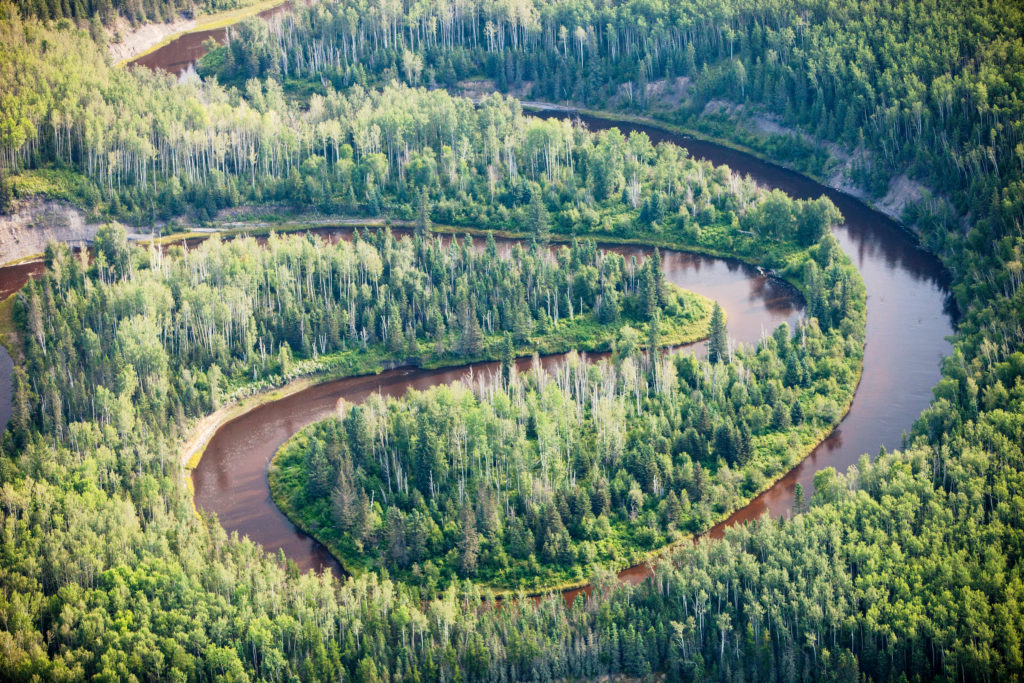r
For the last century, the vast majority (80 percent) of the softwood lumber produced in Canada has been imported to the United States. These forest products are used to build homes and make paper products. The demand for wood products is increasing rapidly around the world—and could triple by 2050. This week—after seven years of rigorous debate, deliberation, consultation and trials—the Forest Stewardship Council (FSC) in Canada rolled out a new national forest management standard that sets a high bar for forestry practices around the world.

This new standard holds the opportunity to show the world how 21st century forestry can provide meaningful solutions for collaborative, equitable and sustainable management of our forests.
The new FSC-Canada forest management standard features three key elements:
- Woodland caribou: Caribou are both an indicator and an umbrella species, meaning they signify the health of the forest and support other plant and animal wildlife. Caribou are also an essential resource for indigenous peoples. Numbers have dropped for many herds and actions to improve conditions for caribou must be prioritized. FSC now includes requirements to directly support caribou habitat and avoid harvest in breeding or migration areas.
- Free, Prior, and Informed Consent: Over 1.6 million indigenous Canadians live in or near forests. The new FSC Canada standard introduces formal requirements to pro-actively design policies that recognize the rights of indigenous peoples to protect their culture, livelihood and lands, including language that is consistent with the legal definition under the UN Declaration on the Rights of Indigenous Peoples.
- Landscape-level management: The impacts of large-scale land use exist beyond a concession’s immediate boundaries. Landscape-level management is needed to maintain, enhance and restore ecosystem services. The new standard includes requirements to minimize and avoid landscape disturbance, like aligning forestry activities with other industrial activities and protection of waterways.
What’s at stake for Canada’s boreal forest
Canada’s boreal forest—a broad swath of northern forest stretching from the Pacific to Atlantic oceans—is home to more than 2.5 million people and over 600 indigenous communities. It, too, is a key driver of the Canadian economy, contributing up to 200,000 jobs. Timber from the boreal forest is a primary export to the United States and around the world.
The Canadian boreal forest is also home to woodland caribou, which is among the most iconic species of conservation concern in the country. It is one of the few large mammals with populations found across nearly every province and territory, amounting to a truly national species, as memorialized for more than 80 years on the 25-cent coin. The boreal populations of woodland caribou have also become a microcosm of debate on how conservation for at-risk species should occur in the country.
In short, the plight of woodland caribou illustrates the immense challenge of reconciling the growing demand for wood products, the tremendous importance of forests for wildlife and the important role the forests play as carbon sinks, the loss of which accelerates the climate crisis.
New standard is a global model
Canada is not alone in addressing these critically important issues, but in many ways is first in advancing practical solutions with potential to influence other high-forest cover countries, such as Indonesia and the Democratic Republic of Congo, that are grappling with similar challenges.
Credible certification standards can help ensure working forests are managed well. And among the certifications, FSC is the gold standard because of its inclusive governance model that equally weights economic, environmental, social and indigenous representation, as well as its performance-based standards that manage for natural forest conditions and preservation of ecosystem services. Finding solutions is complex and requires leadership. Indigenous rights-holders and the stakeholders of Canada’s vast forests have shown us a new bar for how to be better stewards of our planet, support a stable climate, and ensure healthy forests for woodland caribou. Now it’s up to us as forest-users to implement it, and consumers to ask for it.
This article was written by Annika Terrana, senior program officer of responsible forestry and trade at WWF-US and James Snider, VP of science research and innovation at WWF-Canada.

